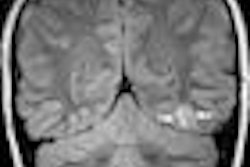In an ongoing effort to curb overutilization of imaging services, the U.S. Department of Health and Human Services' Office of Inspector General (OIG) issued a report late last month that explores MRI services paid under the Medicare Physician Fee Schedule (MPFS) and whether there is a link between the utilization levels of these services and how they are provided.
The study used Medicare Part B claims data from 2005, representing 2.6 million MR claims and $1.8 billion in charges. Researchers took a stratified random sample of 600 claims that were billed through 548 unique provider numbers.
The OIG focused on the technical component of MR exams and broke out data into two subgroups of MR services: those ordered by "high users" of MR and those in which the person ordering the exam had a connection to one or more of the parties that provided the service (what the OIG called "connected" services). High users were defined as doctors whose allowed charges for services that they ordered put them at or above the 95th percentile among doctors who ordered MR services in 2005.
The OIG found the following:
- Two-thirds of MR services were ordered by one of four specialties: internal medicine (21%), orthopedic surgery (19%), family practice (13%), and neurology (13%).
- Most services were performed by independent diagnostic testing facilities (IDTFs), multispecialty groups, and diagnostic radiology provider specialties.
- MR claims tended to be billed globally through a radiologist.
The agency also found that connected services were provided differently than those that were not connected:
- One-quarter of MR services paid under the MPFS in 2005 were connected services and associated with high use.
- High users of MR ordered 55% of connected services, compared to 33% of services that were not connected.
- Orthopedic surgeons and neurologists together ordered 51% of the services ordered by high users, compared to 20% of all other services.
- Half of connected services were performed and paid for by multispecialty groups; IDTFs and diagnostic radiology specialties ordered less connected services compared to other groups.
- Connected services tended to be billed as technical component only and through a provider other than a radiologist.
The OIG concluded that the complexity it found in how MR services are paid under MPFS suggests that similar complexity may also exist in how other kinds of advanced imaging services are paid under the MPFS as well.
"The findings in this report highlight the complex nature of how providers deliver MR paid under the MPFS," the OIG wrote. "The large number of ways that various parties can perform and bill for services reduces the transparency of these transactions."
The study adds more fuel to the federal fire toward curbing self-referral, according to Thomas Greeson, a partner at law firm Reed Smith of Falls Church, VA, who specializes in radiology-related regulatory matters.
"The study should encourage the Centers for Medicare and Medicaid Services to finalize some of the proposals they've made to curtail use of unnecessary diagnostic tests for self-referral," Greeson said. "The OIG has been looking at the growth in use of diagnostic imaging, and in this report there's a clear correlation between higher use of MRI and physicians who perform these services in their own offices."
By Kate Madden Yee
AuntMinnie.com staff writer
October 15, 2008
Related Reading
Self-referral 'sunshine' bill introduced in House, August 5, 2008
Bill would require self-referral financial disclosure, July 30, 2008
CMS and physician self-referral: More bark than bite? April 14, 2008
New CMS rules alter practices in independent imaging centers, April 8, 2008
CMS delays in-office self-referral decision with new MPFS rule, November 7, 2007
Copyright © 2008 AuntMinnie.com




.fFmgij6Hin.png?auto=compress%2Cformat&fit=crop&h=100&q=70&w=100)




.fFmgij6Hin.png?auto=compress%2Cformat&fit=crop&h=167&q=70&w=250)











